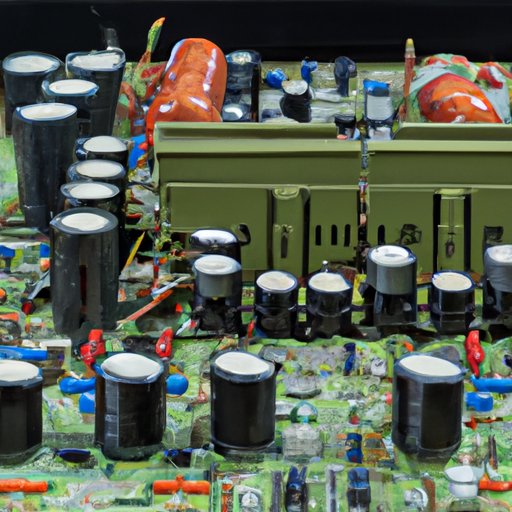Introduction
Analogue technology is a form of technology that uses continuous physical signals to represent numerical data. This technology has been used for centuries in various forms to process information, store data, and transmit messages. In this article, we will explore the basics of analogue technology, its history, evolution, applications and potential future.

Exploring the Basics of Analogue Technology
Analogue signals are physical signals that represent a range of values. These signals can be used to represent a variety of different types of data, including sound waves, electrical signals, and light waves. Analogue signals can be transmitted over long distances and are used to transfer information from one location to another.
Analogue circuits are electronic circuits that use analogue signals to process information. These circuits are composed of components such as transistors, capacitors, and resistors, which are used to create a circuit that can interpret and manipulate analogue signals. Analogue circuits are used in a variety of applications, including audio and video recording, automotive and aerospace design, and telecommunications.
A Brief History of Analogue Technology
Analogue technology has been around since the early 19th century. At the time, it was used primarily for communication purposes, such as sending telegraph messages. The first commercial telephone call took place in 1876, using an analogue signal.
In the early 20th century, major improvements and innovations were made in analogue technology. Radio broadcasting became popular, and the first broadcasted radio programs began airing in 1920. In the 1930s, advances in electronics and communications led to the development of television broadcasting.

How Analogue Technology Has Evolved
The emergence of digital technology in the late 20th century marked a turning point in the evolution of analogue technology. Digital technology allowed for more efficient and accurate processing of data, and its widespread adoption led to a decline in the use of analogue technology. While analogue technology is still used in many applications, digital technology has become the dominant form of data processing.
When comparing analogue and digital technology, there are both advantages and disadvantages. Analogue technology is often preferred for its simplicity, low cost, and ability to capture nuances in sound or images. However, digital technology offers greater accuracy and precision, as well as the ability to store large amounts of data.

Common Applications of Analogue Technology
Analogue technology is still used in a variety of applications today. Audio and video recording are two of the most common applications for analogue technology. Analogue signals are used to capture sound or images, which can then be stored on tape or other media. Analogue signals are also used in automotive and aerospace design, as well as telecommunications.
The Future of Analogue Technology
As digital technology continues to evolve, so too does analogue technology. There is a growing trend towards integrating analogue and digital technologies, allowing for the best of both worlds. For example, some high-end audio systems use a combination of analogue and digital technology to create a more immersive listening experience.
The potential benefits of incorporating analogue technology into modern systems include improved accuracy, better sound quality, and greater flexibility. As these benefits become more apparent, more companies are likely to incorporate analogue technology into their designs.
Conclusion
Analogue technology is a form of technology that uses continuous physical signals to represent numerical data. Analogue technology has been used for centuries in various forms to process information, store data, and transmit messages. Today, analogue technology is still used in a variety of applications, such as audio and video recording, automotive and aerospace design, and telecommunications. As digital technology continues to evolve, so too does analogue technology, with the potential for greater accuracy, sound quality, and flexibility.
Analogue technology is an important part of our technological landscape, and its importance is likely to remain for years to come. As the world moves towards a more connected future, the integration of analogue and digital technologies will continue to be an important factor in the development of new technologies.
(Note: Is this article not meeting your expectations? Do you have knowledge or insights to share? Unlock new opportunities and expand your reach by joining our authors team. Click Registration to join us and share your expertise with our readers.)
